
Gravitationsgesetz • Newtonsches Gravitationsgesetz · [mit Video]
Abstract: This article examines the development of the law of gravitation in the writings of Isaac Newton, Immanuel Kant and Jakob Friedrich Fries. Fries was a philosopher, mathematician and physicist who stood in the Kantian tradition, but who nevertheless had empiricist leanings.. Görg, Erdmann. "Zum Gravitationsgesetz bei Newton, Kant.

Das Newtonsche Gravitationsgesetz (Physik10bcUER KW17a) YouTube
Gravitationsgesetz und -feld Ausblick. NEWTONs Herleitung des Gravitationsgesetzes. Vorlesen. Vorbemerkungen. Während KEPLER und seine Vorläufer sich im Wesentlichen damit beschäftigten, wie sich ein Planet bewegt, ist NEWTON aufgrund seiner Axiome als erster in der Lage auch die Frage "warum sich ein Planet gerade so bewegt" anzugehen.

Newtonsches Gravitationsgesetz YouTube
Introduction to Gravitational Fields . Sir Isaac Newton's law of universal gravitation (i.e. the law of gravity) can be restated into the form of a gravitational field, which can prove to be a useful means of looking at the situation.Instead of calculating the forces between two objects every time, we instead say that an object with mass creates a gravitational field around it.

1.16 Gravity Geosciences LibreTexts
This is a general physical law derived from empirical observations by what Isaac Newton called inductive reasoning. It is a part of classical mechanics and was formulated in Newton's work Philosophiæ Naturalis Principia Mathematica ("the Principia"), first published on 5 July 1687. The equation for universal gravitation thus takes the form:
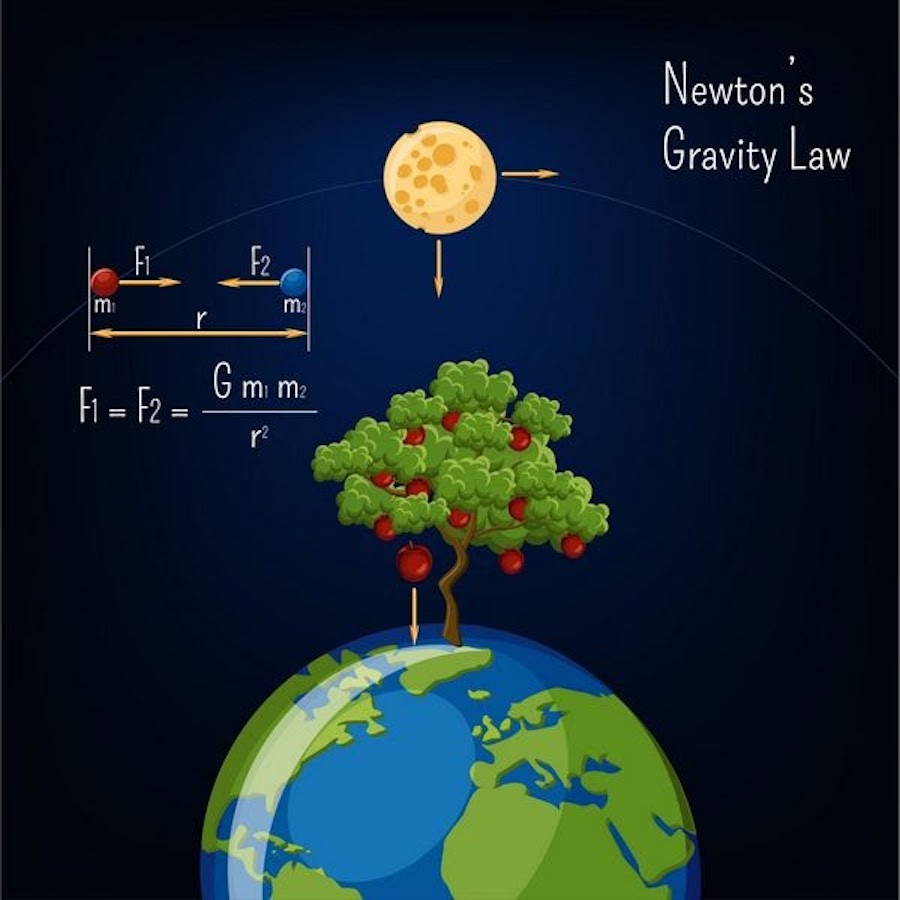
Что такое гравитация и как она работает, простыми словами РБК Тренды
Das Gravitationsgesetz gilt als eine der Grundlagen für die klassische Mechanik. Die Größe der Gravitationskraft ist abhängig von der Masse der Körper und der Distanz beider Massepunkte. Die von Newton aufgestellte Formel für die Gravitationskraft lautet: F G = G ⋅ m 1 ⋅ m 2 r 2.
NewtonGravitationsgesetz Gravitationskraft
Sir Isaac Newton's law of inertia states an object will continue to move in a straight line unless acted on by another force. But then, how did this explain why the moon orbited the earth? What was the other force? Newton theorized the same force that caused an apple to fall from a tree was also the force that kept the moon in place. Over several years, Newton worked until he had developed.
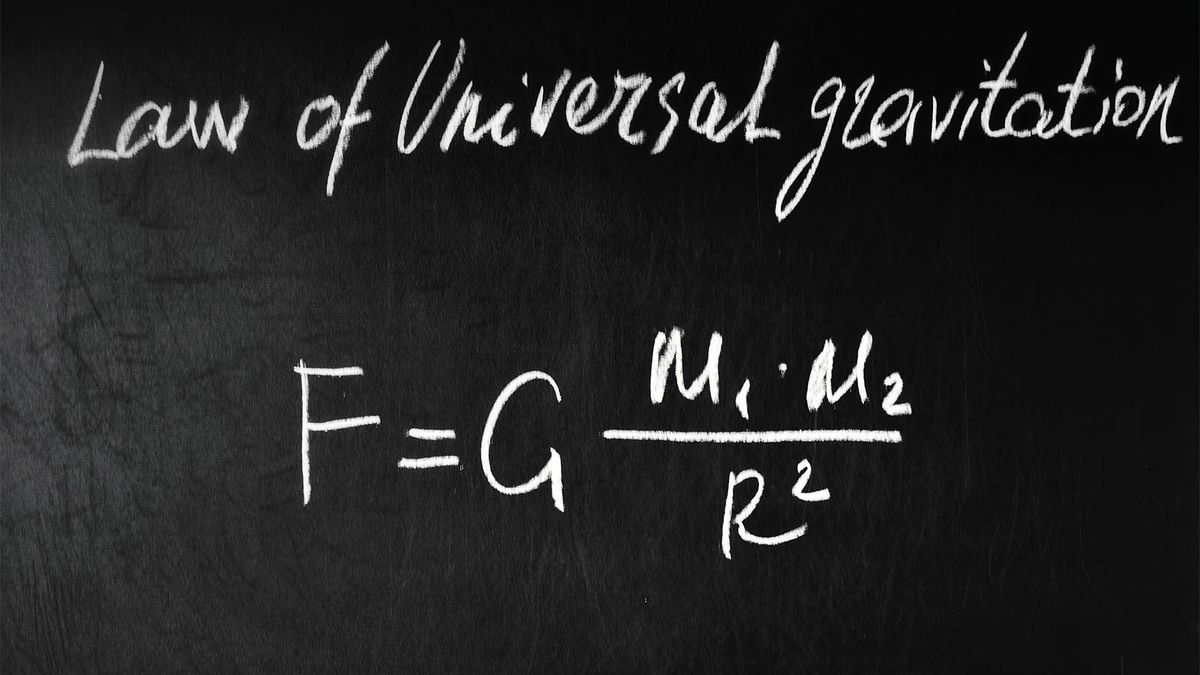
Exploring the "G" in Newton's Law of Universal Gravitation HowStuffWorks
The story of the gravitational constant, Big G: In 1686 Isaac Newton realized that the motion of the planets and the moon as well as that of a falling apple could be explained by his Law of Universal Gravitation, which states that any two objects attract each other with a force equal to the product of their masses divided by the square of their separation times a constant of proportionality.
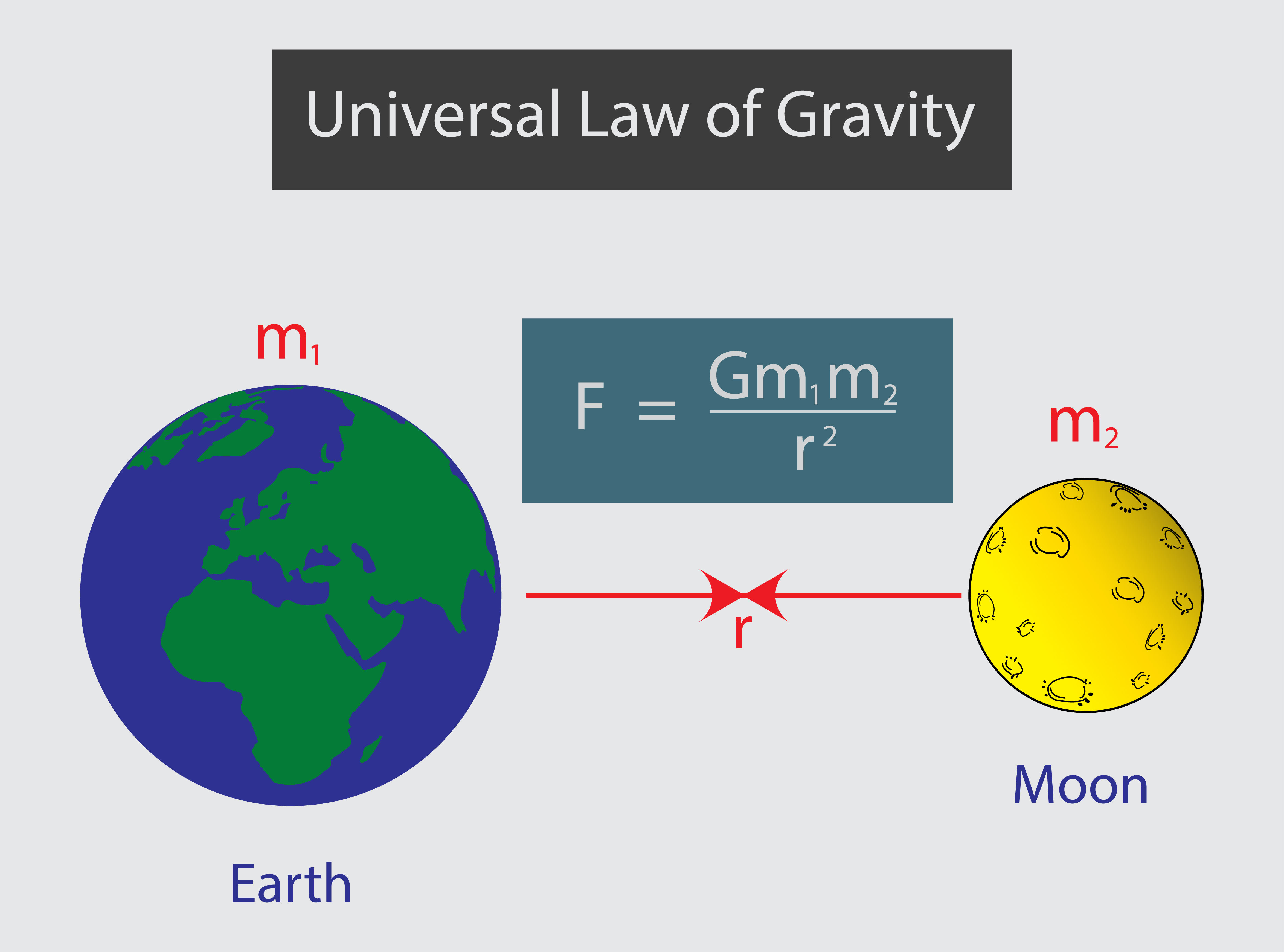
What is Gravitation Definition, Formulas, Books ,Notes and More
Isaac Newton behauptete, dass sich alle Körper durch ihre Gravitationskraft anziehen und dass die Stärke dieser Kraft mit dem Quadrat des Abstands der Körper abnimmt.. Von der Allgemeinen Relativitätstheorie zwar inzwischen überholt, bleibt das Gravitationsgesetz doch eines der Konzepte der Physik mit der größten Tragweite, denn es.
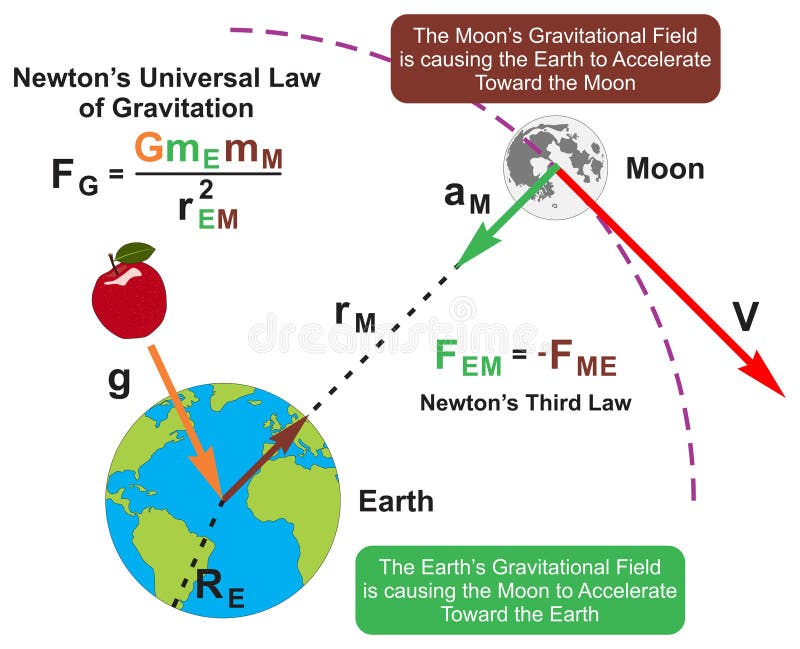
Newton Universal Law of Gravitation Infographic Diagram Physics Science Stock Vector
The Moon's orbit has a radius of about 384,000 km (239,000 miles; approximately 60 Earth radii), and its period is 27.3 days (its synodic period, or period measured in terms of lunar phases, is about 29.5 days).Newton found the Moon's inward acceleration in its orbit to be 0.0027 metre per second per second, the same as (1/60) 2 of the acceleration of a falling object at the surface of Earth.
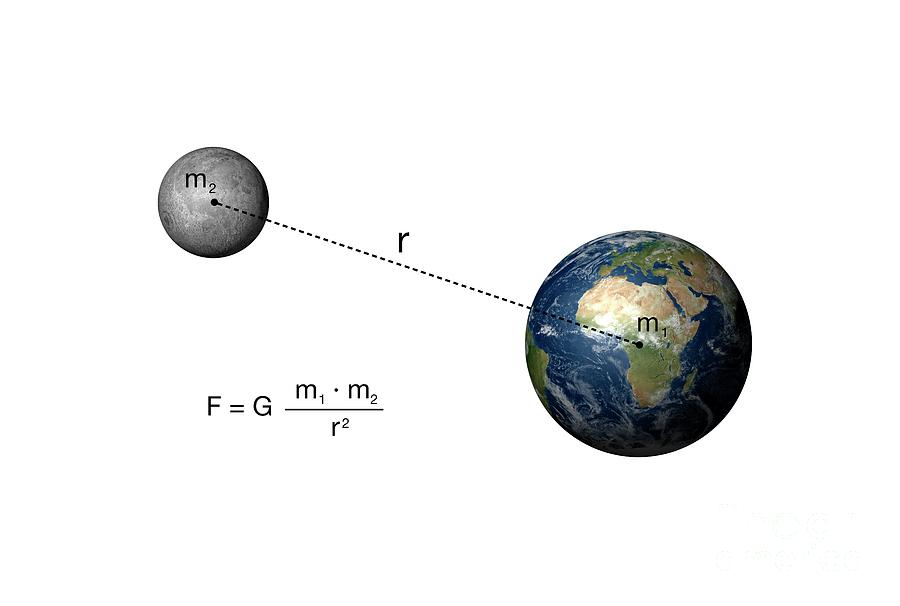
Newton's Law Of Gravitation And The Earthmoon System 2 Photograph by Mikkel Juul Jensen
A genius with dark secrets. Isaac Newton changed the way we understand the Universe. Revered in his own lifetime, he discovered the laws of gravity and motion and invented calculus. He helped to.

Gravitational Force Definition, Formula, Examples, Properties, FAQs
Isaac Newton: einfach erklärt Erfindungen, Steckbrief, Lebenslauf Newton Isaac Schwerkraft mit kostenlosem Video. So entdeckte Isaac Newton die Schwerkraft und entwickelte das Gravitationsgesetz. Außerdem beschäftigte sich der britische Wissenschaftler mit der Optik.

Newton's Universal Law of Gravitation YouTube
Newtonsches Gravitationsgesetz. Das Newtonsche Gravitationsgesetz ist ein Gesetz der klassischen Physik, nach dem jeder Massenpunkt auf jeden anderen Massenpunkt mit einer anziehenden Gravitationskraft einwirkt. Diese Gravitationskraft ist entlang der Verbindungslinie beider Massenpunkte gerichtet sowie in ihrer Stärke proportional zum Produkt.
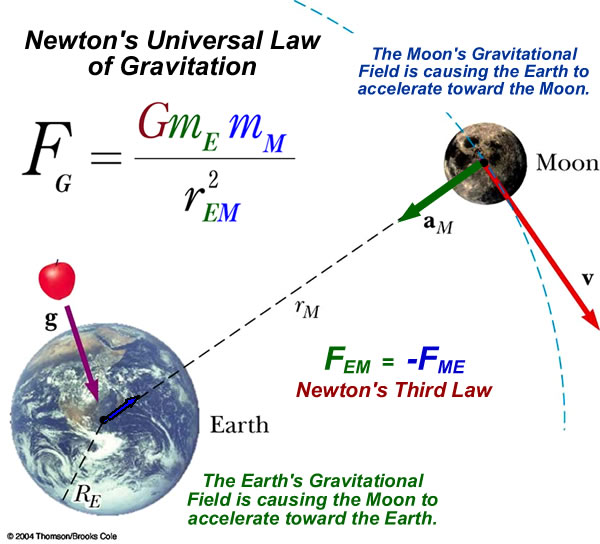
Gravitation
Isaac Newton als Namensgeber Die äquivalenten Anziehungskräfte zweier Massen Das Newtonsche Gravitationsgesetz ist ein Gesetz der klassischen Physik, nach dem jeder Massenpunkt auf jeden anderen Massenpunkt mit einer anziehenden Gravitationskraft einwirkt.
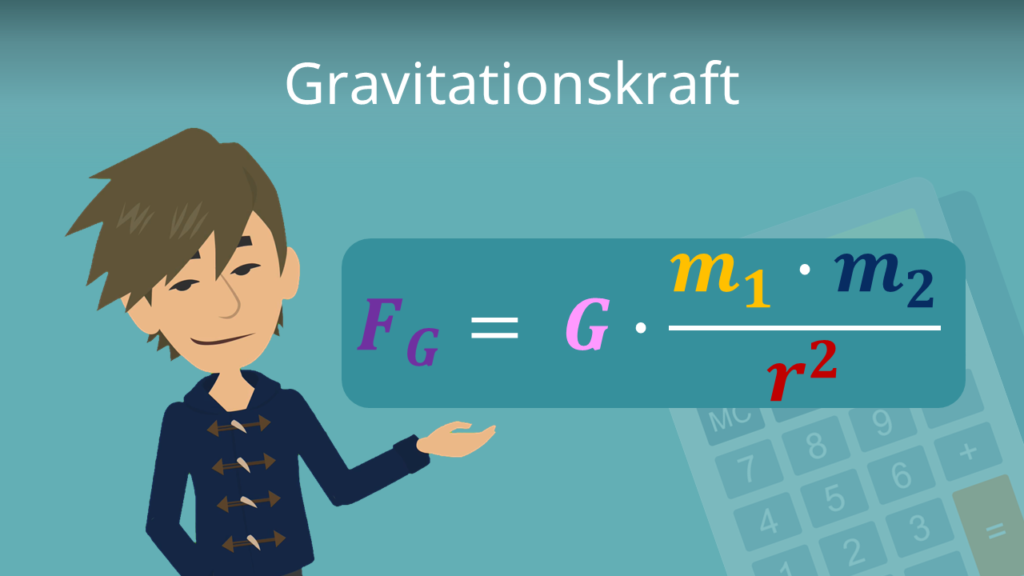
Gravitationsgesetz • Newtonsches Gravitationsgesetz · [mit Video]
Isaac Newton (born December 25, 1642 [January 4, 1643, New Style], Woolsthorpe, Lincolnshire, England—died March 20 [March 31], 1727, London) English physicist and mathematician who was the culminating figure of the Scientific Revolution of the 17th century. In optics, his discovery of the composition of white light integrated the phenomena of colours into the science of light and laid the.

PPT Gravitationswellen PowerPoint Presentation, free download ID4439023
Newton's law of gravitation, statement that any particle of matter in the universe attracts any other with a force varying directly as the product of the masses and inversely as the square of the distance between them. In symbols, the magnitude of the attractive force F is equal to G (the gravitational constant, a number the size of which depends on the system of units used and which is a.

Gravitationsgesetz • Newtonsches Gravitationsgesetz · [mit Video]
Sir Isaac Newton FRS (25 December 1642 - 20 March 1726/27) was an English polymath active as a mathematician, physicist, astronomer, alchemist, theologian, and author who was described in his time as a natural philosopher. He was a key figure in the Scientific Revolution and the Enlightenment that followed. His pioneering book Philosophiæ Naturalis Principia Mathematica (Mathematical.